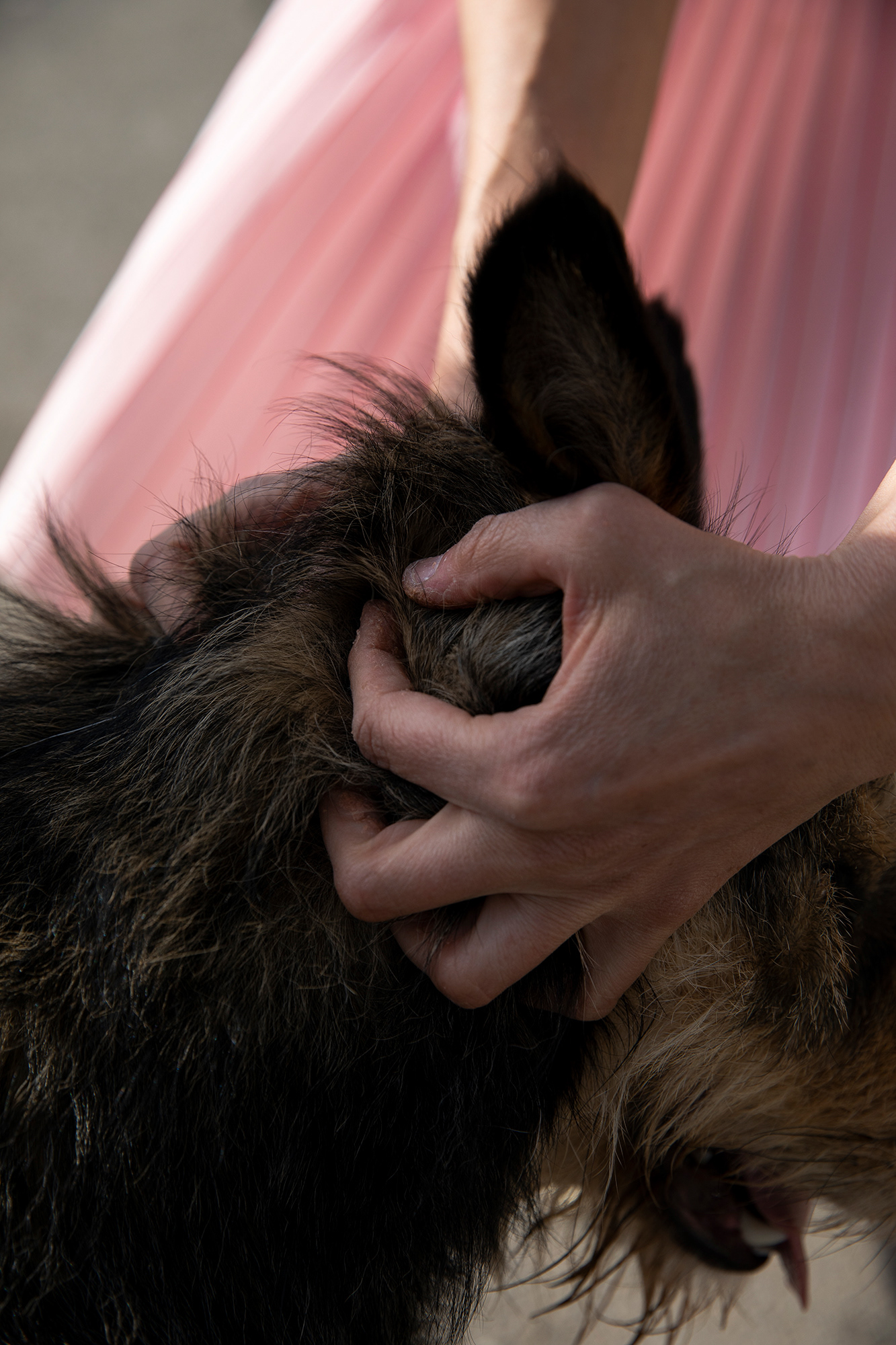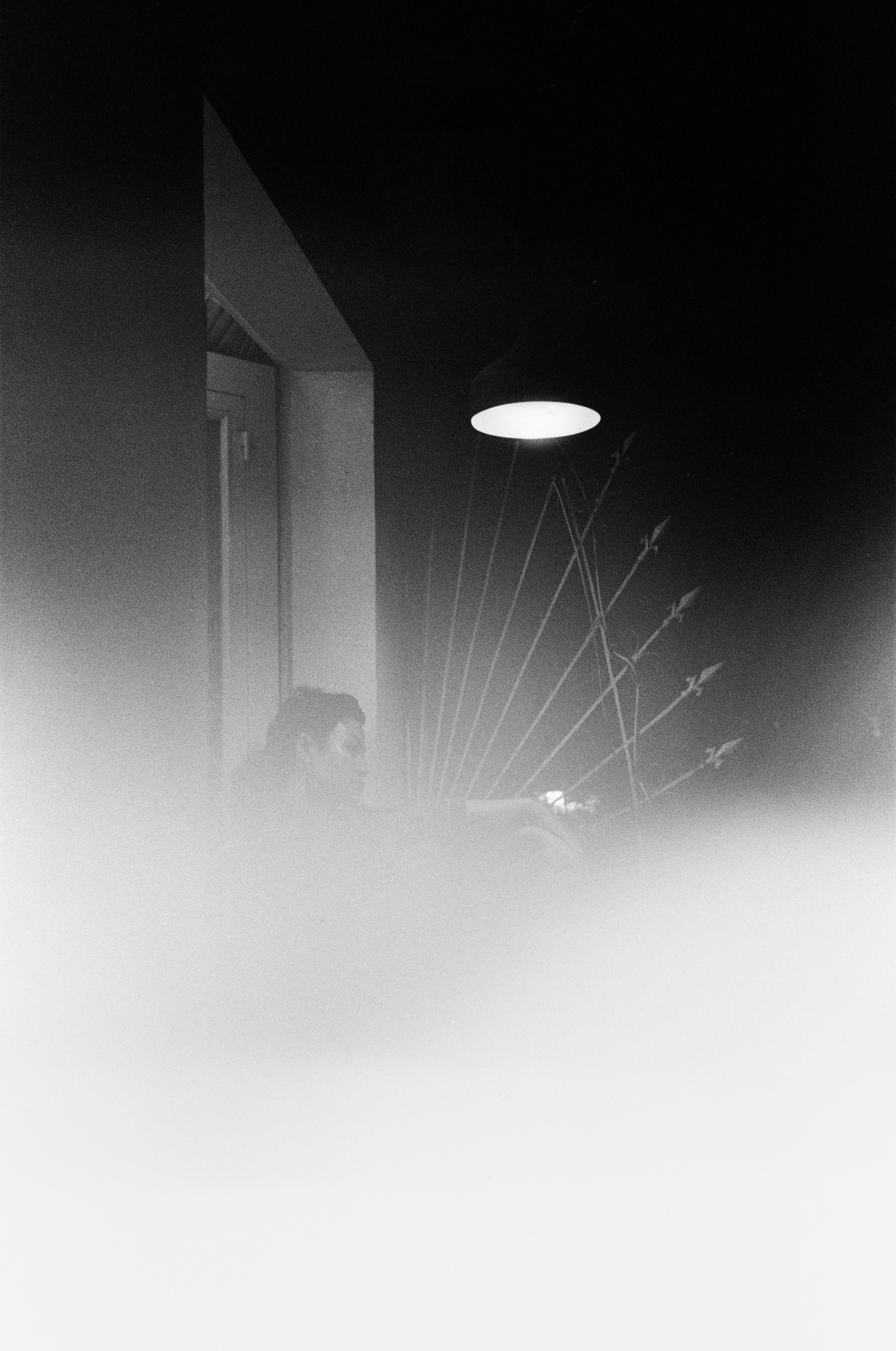
Eduard Michalko

Minh-Hoang Nguyen
Eduard:
"I feel a lack of trust towards people, actually only to people.
I think I don't have a problem to trust more animals, the weather or so, but people, trust them is sometimes for me very difficult and it scares me.
I have a problem to open myself to people or say something, because I think they could quickly read me and just this idea sometimes scares myself.
I know that I hurt others, especially to my nearest, greatest many times, or maybe when I look at it, perhaps only twice and I would love to return the confidence and our familiarity back, so I'm trying to continue my work, even if I know I hurt.
So as well as my photo for this week, in the picture, we can see the dog, his name is Oscar, the dog who was found in bad condition and new owners took him with the goal of taking care of him better, but I could see that Oscar distrusted everyone, as he did not trust me neither.
The hand of the new owner who have decided take care of him, in conjunction with a light pink color of dresses, gives me hope to believe in better confidence, familiar relation between animal and human and vice versa."
"I feel a lack of trust towards people, actually only to people.
I think I don't have a problem to trust more animals, the weather or so, but people, trust them is sometimes for me very difficult and it scares me.
I have a problem to open myself to people or say something, because I think they could quickly read me and just this idea sometimes scares myself.
I know that I hurt others, especially to my nearest, greatest many times, or maybe when I look at it, perhaps only twice and I would love to return the confidence and our familiarity back, so I'm trying to continue my work, even if I know I hurt.
So as well as my photo for this week, in the picture, we can see the dog, his name is Oscar, the dog who was found in bad condition and new owners took him with the goal of taking care of him better, but I could see that Oscar distrusted everyone, as he did not trust me neither.
The hand of the new owner who have decided take care of him, in conjunction with a light pink color of dresses, gives me hope to believe in better confidence, familiar relation between animal and human and vice versa."
Hoang:
"I have seen your picture. I find to be simple but at the same time perhaps exactly how it should be. Intimacy is simple for some and difficult for others like you rightly said. In my case, I’m ambivalent. I had a good laugh when I learned that our assignment this week is “intimacy.” The reason is that intimacy is what I always look for in all places. I mentioned in our earlier correspondence that I am a man of solitude and that I see that existential solitude in people around me. If solitude is one side of a coin, intimacy is the other. As much as I see solitude, I see intimacy. I meet people, I talk to them, I take pictures of them, I pick out couples from a busy street… It was, perhaps, intimacy itself that led me to photography. Thanks to the camera, I can approach people, interact with them, and get to know them without having to justify my interest.
Recently, however, I started using photography itself to help others get used to their boundary. Or in other words, their own solitude and their search for intimacy. These people ask me to take pictures of them in order to see themselves through my eyes. The shoot is as banal as could be. I spend time with them in their everyday life and take pictures of them with minimal intervention. We talk, casually at first, but then the conversation often becomes highly personal and intimate. The shoot, the talk, and the walk can last up to 12 hours, during which I shoot whenever I feel like. The result is images that are at once banal but true because of their banality. As you must be acutely aware, as revealed through your complex relationship with intimacy, the pictures mirror what happens between the photographer and his subject and so there are pictures that are painfully intimate, and the ones in which my subject is on guard and reject my attempt to connect. The pictures are, to both me and my subjects, evidence of what it means to be human, to have the desire to connect, and at the same time the fear of being vulnerable. One of them said this about one of the pictures: “It’s special. [It’s about how] I don’t want to be seen or to be touched. [I was] Shy but gradually wanting to open up. I can see my contradiction in this picture.”
The picture I have chosen for this assignment is not the one she talked about but one that for me encapsulates the whole process of photographing intimacy. A first-of-the-roll picture, it is by accident, imperfect, but still a result of a desire to capture (and connect). It contains enough of the ambiguity of intimacy that it makes me comfortable."
Recently, however, I started using photography itself to help others get used to their boundary. Or in other words, their own solitude and their search for intimacy. These people ask me to take pictures of them in order to see themselves through my eyes. The shoot is as banal as could be. I spend time with them in their everyday life and take pictures of them with minimal intervention. We talk, casually at first, but then the conversation often becomes highly personal and intimate. The shoot, the talk, and the walk can last up to 12 hours, during which I shoot whenever I feel like. The result is images that are at once banal but true because of their banality. As you must be acutely aware, as revealed through your complex relationship with intimacy, the pictures mirror what happens between the photographer and his subject and so there are pictures that are painfully intimate, and the ones in which my subject is on guard and reject my attempt to connect. The pictures are, to both me and my subjects, evidence of what it means to be human, to have the desire to connect, and at the same time the fear of being vulnerable. One of them said this about one of the pictures: “It’s special. [It’s about how] I don’t want to be seen or to be touched. [I was] Shy but gradually wanting to open up. I can see my contradiction in this picture.”
The picture I have chosen for this assignment is not the one she talked about but one that for me encapsulates the whole process of photographing intimacy. A first-of-the-roll picture, it is by accident, imperfect, but still a result of a desire to capture (and connect). It contains enough of the ambiguity of intimacy that it makes me comfortable."